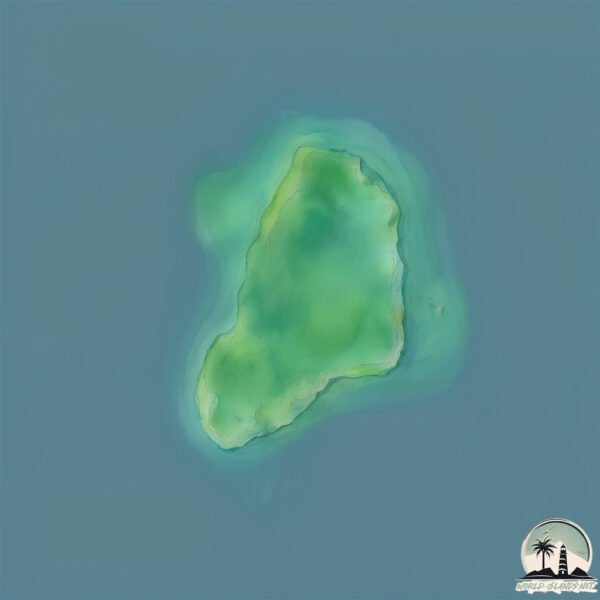Pulau Yarsun

Welcome to Pulau Yarsun, a Tropical island in the South Pacific Ocean, part of the majestic Pacific Ocean. This guide offers a comprehensive overview of what makes Pulau Yarsun unique – from its geography and climate to its population, infrastructure, and beyond. Dive into the details:
- Geography and Size: Explore the island’s size and location.
- Climate and Weather: Weather patterns and temperature.
- Topography and Nature: Uncover the natural wonders of the island.
- Infrastructure and Travelling: Insights on reaching, staying, and making the most of your visit.
- News and Headlines: Latest News.
Geography and size of Pulau Yarsun
Size: 0.718 km²
Coastline: 3.6 km
Ocean: Pacific Ocean
Sea: South Pacific Ocean
Continent: Oceania
Pulau Yarsun is a Tiny Island spanning 0.718 km² with a coastline of 3.6 km.
Archipel: Melanesia – A subregion of Oceania in the southwestern Pacific Ocean, including countries like Fiji, Solomon Islands, and Vanuatu, known for their diverse cultures and languages.
Tectonic Plate: Woodlark – Situated in the eastern part of Papua New Guinea, the Woodlark Plate is a small tectonic plate primarily consisting of oceanic crust and undergoing active rifting, contributing to the complex geology of the region.
The geographic heart of the island is pinpointed at these coordinates:
Latitude: -2.11762975 / Longitude: 139.47500208
Climate and weather of Pulau Yarsun
Climate Zone: Tropical
Climate Details: Tropical Rainforest Climate
Temperature: Hot
Climate Characteristics: This climate is typified by heavy rainfall throughout the year, high humidity, and consistently high temperatures, leading to lush rainforests and rich biodiversity. Seasonal temperature variations are minimal.
Topography and nature of Pulau Yarsun
Timezone: UTC+09:00
Timezone places: Asia/Tokyo
Max. Elevation: -6 m
Mean Elevation: -15 m
Vegetation: Evergreen Broadleaf Forest
Tree Coverage: 75%
The mean elevation is -15 m. Remarkably, this unique island barely emerges above the sea level, showcasing nature’s fascinating interplay with the ocean. The island is characterized by Plains: Flat, low-lying lands characterized by a maximum elevation of up to 200 meters. On islands, plains are typically coastal lowlands or central flat areas.
Dominating Vegetation: Evergreen Broadleaf Forest
Characterized by dense, lush canopies of broadleaf trees that retain their leaves year-round. These forests are typically found in tropical and subtropical regions and are known for their high biodiversity. Pulau Yarsun has a tree cover of 75 %.
Vegetation: 2 vegetation zones – Low Diversity Island
Islands with two distinct vegetation zones offer slightly more ecological variety. These zones could be due to differences in elevation, moisture, or other environmental factors. While still limited in biodiversity, these islands may offer a contrast between the two zones, such as a coastline with mangroves and an inland area with grassland.
Infrastructure and Travelling to Pulau Yarsun
Does the island have a public airport? no.
There is no public and scheduled airport on Pulau Yarsun. The nearest airport is Dortheys Hiyo Eluay International Airport, located 126 km away.
Does the island have a major port? no.
There are no major ports on Pulau Yarsun. The closest major port is JAYAPURA, approximately 145 km away.
The mean population of Pulau Yarsun is 1 per km². Pulau Yarsun is Gently Populated. The island belongs to Indonesia.
Continuing your journey, Pulau Liki is the next notable island, situated merely km away.
Indonesia is classified as Emerging region: MIKT: Mexico, Indonesia, South Korea, and Turkey – Economies recognized for their development potential and emerging market status. The level of income is Lower middle income.
News – Latest Updates and Headlines from Pulau Yarsun
Stay informed with the most recent news and important headlines from Pulau Yarsun. Here’s a roundup of the latest developments.
Please note: The data used here has been primarily extracted from satellite readings. Deviations from exact values may occur, particularly regarding the height of elevations and population density. Land area and coastline measurements refer to average values at mean high tide.
